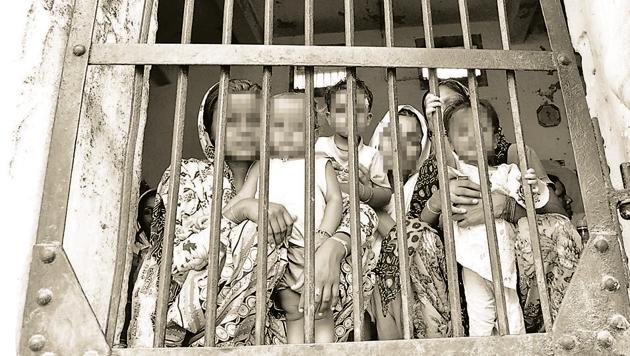Prisons must do more to help their women inmates
Once the punishment is accorded by the court of the law, the next step is healing. But where will that come from?
With my experience of visiting several jails across India to study prison reforms, I have seen that the struggles behind bars are not really in the public domain. In an informal meeting with NHRC member, Justice Prafulla Chandra Pant, I made two suggestions. One, to make libraries a compulsory part of women’s prisons; and two, introduce outdoor games for them.

A few months ago, a prison officer from Maharashtra shared with me the condition of women inmates in one prison where they are confined in a mini-enclosure. The result of this living condition is that now most of these women can barely walk more than 500 metres.
In India, there are only 18 jails exclusively for women. Everywhere else, women’s prisons are a part of the main prison where male inmates are lodged. While male inmates are introduced to outdoor games like badminton, basketball and cricket, women inmates are confined to narrow spaces with just the very basic minimum facilities. This results in poor physical and mental health. While male inmates even participate in tournaments regularly organised between them and the prison staff, women are left with little or no choices at all. This does not mean that they are given adequate options for indoor games either. Prison administrators do not feel the need to facilitate enough recreational activities for them. Prisons were clearly designed keeping in mind only male inmates. The concept of having women inmates, accompanied at times by their children, came at a much later stage.
Similarly, prison authorities across several states are yet to accept the logic of having a separate library for women inmates. In all big jails, the library is a part of the main unit where women cannot go. In certain jails, there is a provision for having a library, the existence of which is no more than a formality. The range of topics that these libraries cover is so limited and dismal that you can find books either on religion or on two or three national leaders. The budget for buying books is also meagre.
Prison manuals talk about vocational courses in prisons but offer very little variety. The population inside prisons is very fluid. Inmates come and go and they continue with whatever is being practised inside prison before they came to the enclosure. Within the fixed parameters inside the prison and also a constant change in floating population, prisons display a very complex style of functioning. Inmates come from varied social, political, educational and economic backgrounds. They all have different skill sets, levels of understanding and cultural influences. Apart from this, those who land in prison also have committed different types of crimes. There is a huge difference in the attitudes of jail authorities in dealing with undertrial inmates and convicts. Keeping these factors in mind, it is imperative that these overcrowded prisons provide them engagements, but prisons seldom innovate.
Even the so-called high profile organisations entrusted with the task of safeguarding the rights and entitlement of inmates, do not act efficiently. Society expects that inmates should emerge completely reformed the moment they are released. Sadly, we fail to administer attitudinal change through providing a healing system within prisons. After all, prisons provide shelter to those who are considered to be aberrations in society and who deserve a punishment. Once the punishment is accorded by the court of the law, the next step is healing. But where will that come from?
Vartika Nanda is the founder of Tinka Tinka, a movement dedicated to prison reforms.
The views expressed are personal






